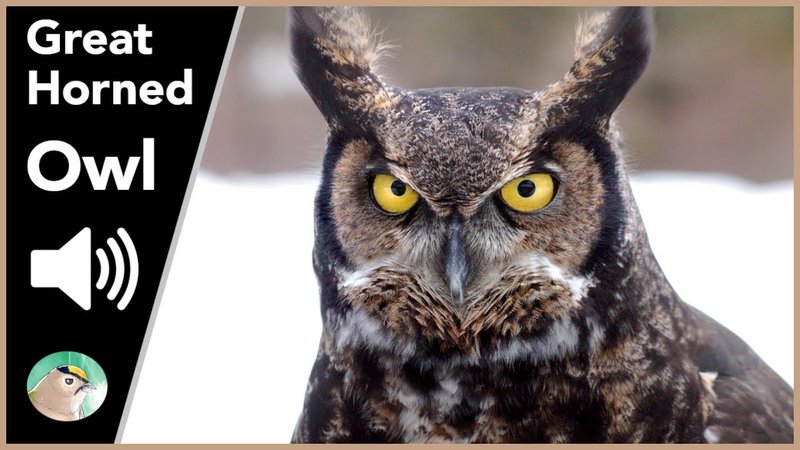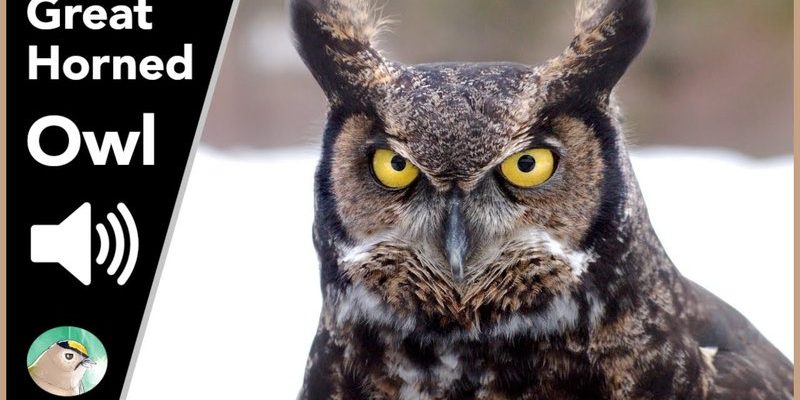
Now, picture a bustling coffee shop. The chatter, laughter, and the occasional clink of cups create a unique atmosphere. That’s similar to how the Great Horned Owl communicates. Each sound has a specific meaning and purpose, much like how we use our voices to express different feelings. Whether you’re an avid birdwatcher or just curious about wildlife, understanding these vocalizations can enhance your appreciation of nature.
The Basics of Great Horned Owl Sounds
When it comes to the Great Horned Owl, understanding their sounds is key to unlocking their behaviors. Generally, they have a diverse vocal repertoire that changes with the context. The most iconic call is a deep, resonant “hoo-hoo” sound, often heard at dusk or dawn. This call can be likened to a distant, echoing drumbeat in the night, signaling their presence.
Great Horned Owls can also produce a series of shorter barks or “chucks.” Imagine a quick burst of laughter that signifies excitement or urgency. These chucks are often used to communicate with their young or to signal alarm when they sense danger nearby. The beauty lies in the variety; each call carries a different weight and emotion.
In addition to their classic calls, these owls can also hiss or screech when threatened. It’s their way of saying, “Back off!” This vocalization is especially common during the breeding season, when they protect their nests and young. Just like a mother bear growling to keep intruders away, the hissing from a Great Horned Owl serves as a warning.
Understanding these vocalizations isn’t just for fun—it’s crucial for their survival. For example, during the mating season, males call out to attract females. The depth and frequency of their hoots can indicate their health and vitality. A strong, robust call suggests a healthy male, ready to mate. Females listen carefully, picking up on these subtle cues.
Moreover, vocalizations help maintain territory. Great Horned Owls are known to be quite territorial, and their calls fortify boundaries. When a male hoots, he’s not just singing; he’s declaring, “This is my space!” Invading another owl’s territory can lead to fights, so their vocal cues help avoid unnecessary confrontations.
Essentially, these calls are more than just sounds; they are tools for communication. They help keep families together and ensure the survival of the species. Just like humans use words to foster connections and resolve conflicts, owls do the same through their vocalizations.
Common Calls of the Great Horned Owl
Let’s dive a bit deeper into the different types of calls you might encounter. It’s not just about the deep hoots; it’s a whole symphony of sounds!
- Hoots: The classic long “hoo-hoo” that most people recognize. It can be a mating call or a way to mark territory.
- Chucks: Rapid, short sounds that convey excitement, alarm, or communication between a parent and chick.
- Hisses: An aggressive sound, usually a warning to back off.
- Screeches: Typically a harsh, loud noise made when they’re startled or threatened.
Each of these calls serves a distinct purpose, painting a complex picture of their interactions. Imagine listening to a symphony where every instrument has its role—an owl’s vocalizations are no different.
Hoots: The Signature Call
The hoot is perhaps the most recognized sound associated with the Great Horned Owl. Typically, you’ll hear it in the early evening or early morning, echoing through the woods. A single hoot might be an invitation, while a series of hoots can mean they’re claiming their territory.
You might notice they tend to repeat this sound at intervals. Think of it as a rhythmic heartbeat of the night. It’s soothing yet commanding. When you hear it, you can’t help but feel that the owl is assuring you of its presence—an ancient sentinel of the dark.
Chucks: The Playful Communicators
Chucks represent a more playful side to owl communication. When you hear those quick bursts, it’s likely the owls are interacting with each other, perhaps a parent calling out to its fledgling. These sounds are friendly and energetic, like a group of friends sharing a laugh.
When you’re out in nature and hear these sounds, it’s a cue to look for the young owls hopping around. They might be a bit clumsy, but they’re learning and growing, just like us.
The Role of Vocalizations in Mating
During the breeding season, vocalizations become even more critical. Males will hoot to attract females, showcasing their strength and health. It’s like a dating game but in the wild! When a female hears a male’s impressive hoots, she’s assessing his fitness as a potential mate.
Interestingly, females can also respond with their own calls, creating a dialogue filled with anticipation. Imagine a back-and-forth conversation during a first date—it’s filled with excitement and energy! This exchange helps them form a bond before they even meet face-to-face.
Vocalizations also play a critical role in the nesting phase. Once a female has chosen her mate, their calls keep the pair connected while they prepare for their young. It’s a beautiful, harmonious existence that mirrors many aspects of human relationships.
Common Misconceptions About Owl Sounds
Despite their fascinating vocalizations, there are several misconceptions surrounding them. One common myth is that all owls hoot. While the Great Horned Owl does indeed hoot, not all species communicate this way. Some may screech or whistle, highlighting the diversity in owl sounds.
Another misconception is that vocalizations are only for communication. While that’s a big part of it, these sounds can also signal stress or discomfort. For instance, if an owl feels threatened, it may screech as a warning to potential predators.
Understanding these nuances is essential for anyone interested in learning more about Great Horned Owls. Just like unraveling the complexities of human emotions, delving into owl vocalizations offers richer insights into their lives.
In the world of the Great Horned Owl, vocalizations are a fascinating blend of communication, emotion, and survival. Each sound conveys a message, whether it’s claiming territory, attracting a mate, or warning of danger. By tuning into these sounds, we uncover a deeper appreciation for nature’s wonders.
Next time you’re out in the woods or even just in your backyard, take a moment to listen. You might just hear the eerie yet captivating calls of the Great Horned Owl, revealing a beautiful story in the night sky. Learning to understand these vocalizations not only enhances your outdoor experiences but also connects you to the intricate web of life around you.

